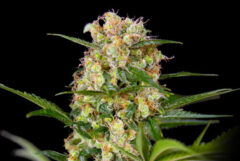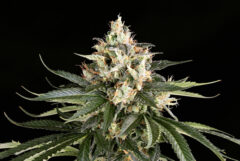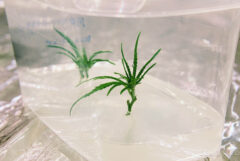In this report, we’ll detail our time with Sensi Purple Kush, a 70% indica bred from three heavy hitters: Hindu Kush, Skunk Kush, and Maple Leaf Indica. The plant’s short stature seems odd compared to its thin, lanky branches and that did present a minor challenge, but the massive yield of potent buds was worth the effort.
Total growing time: 94 days
Flowering time: 73 days
Final height: 93 cm
Final yield: 158 grams
THC content: 21.7%
To give our Sensi Purple Kush Feminized cannabis plant the best shot at success, we grew it under a 1000 W Phillips GreenPower HPS light set to an 18/6 schedule. We grew our plant in an 8-litre plastic pot filled with BAC Lava mix and maintained a regular 23°C when the light was on with the temperature dropping to 21°C overnight. The humidity of our grow space was kept at 65% during vegetation, gradually reducing it as the plant developed.
Germination & seedling
As with any grow, the first step was to germinate our seed. Fortunately, this is quick, easy, and only requires a few basic household supplies; a plate, paper towels, and a plastic bag. We simply folded up a couple of paper towels and doused them with 20-30 ml of water—they should be damp but not soaked. Next, we placed the seed in the centre, covered it with another damp paper towel, and put it into an open plastic bag.
We set the plate somewhere warm and left it for a little more than 24 hours. After about a day, our seed cracked open and we could see a small white taproot sticking out about a centimetre. We placed the seed—taproot down—into a pre-soaked Rockwool cube, put it under a 600 W LED lamp and simply left it for three days. On the third day, we gave it the first watering with 100 ml of pH-balanced water (pH 6.2; EC 0.8) and a small dose of rooting hormone.
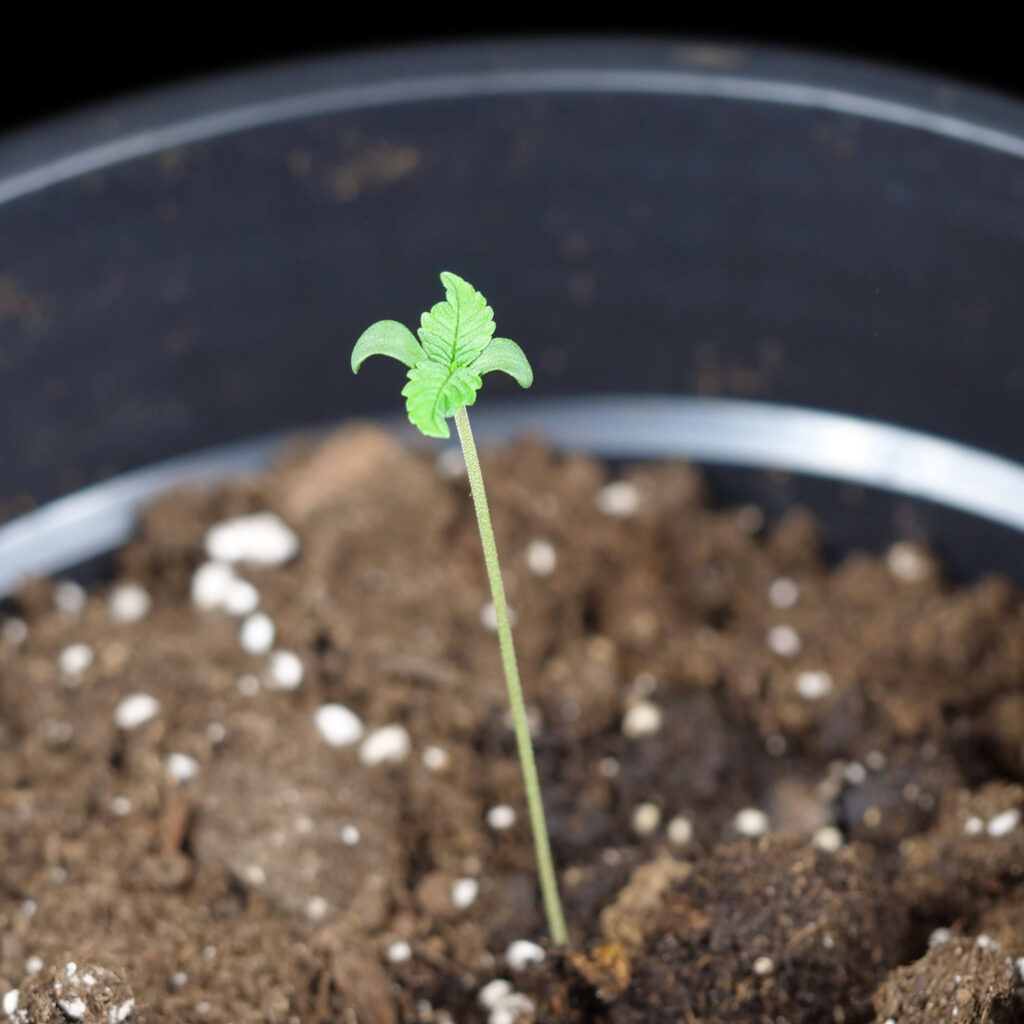
By the end of week one, our plant had grown to 8 cm and was sporting a set of pre-leaves on top of a thin and straight stem. By now, the roots were growing out of the bottom of the Rockwool cube and we planted the setup into our 8-litre plastic pot and placed it under our 1000 W lamp. By now, we were feeding our plant daily with 100 ml of water (pH 6.0; EC 1.4) mixed with Bio Grow liquid nutrients.
Vegetation
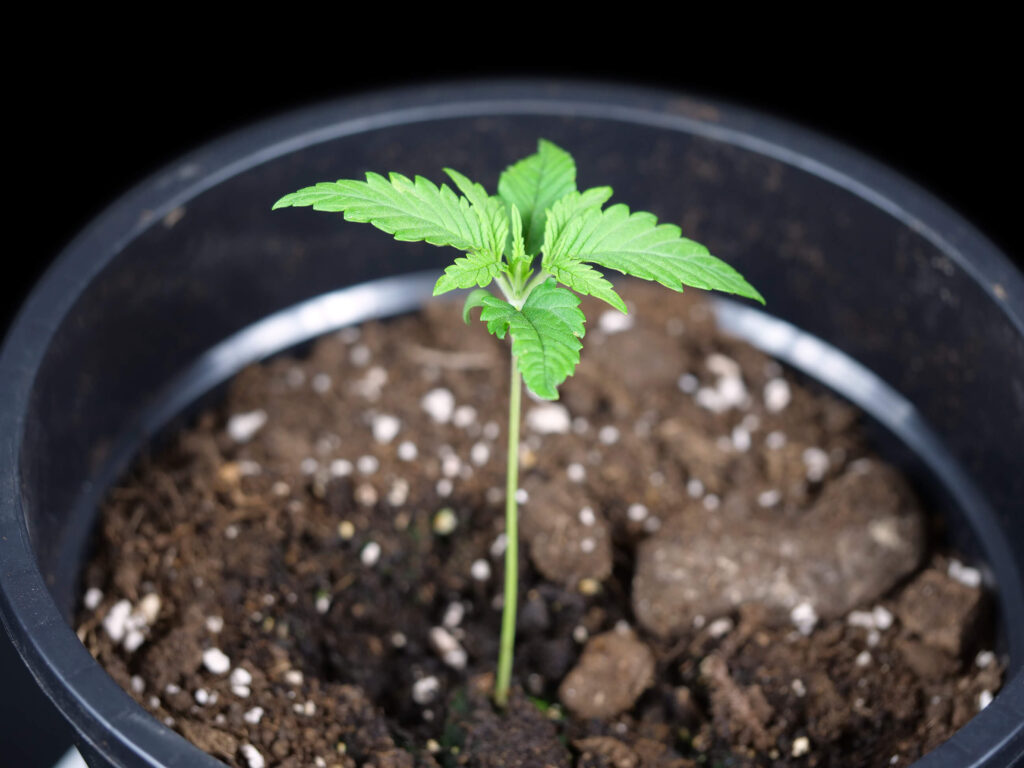
In week two, our seedling had sprouted its first set of true leaves and was standing 12 cm tall. This week, we doubled the volume of water to 200 ml to help give the plant all it needed to continue its rapid development.
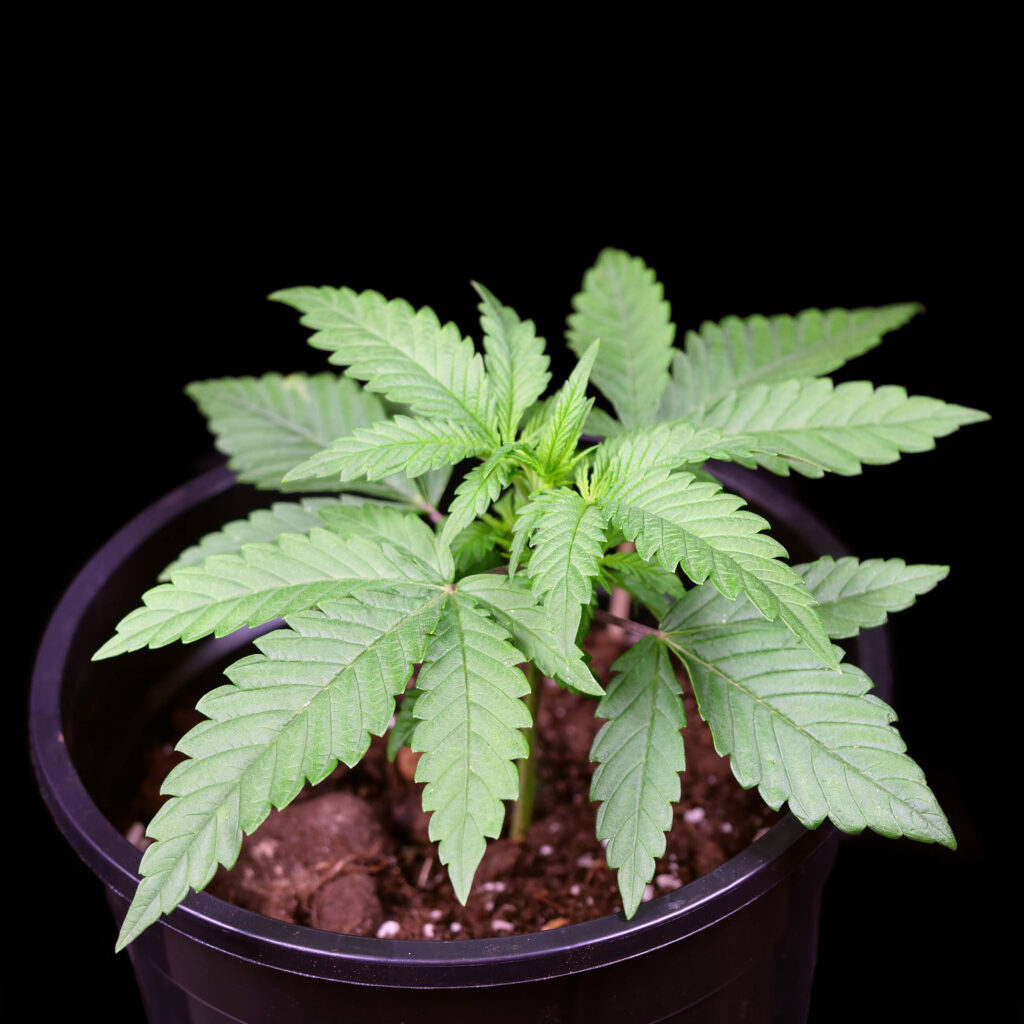

Week three saw our plant nearly double in height to reach 21 cm. During this time, it also grew multiple sets of long, broad leaves with a healthy vibrant green hue. With flowering just a week away, we again doubled the volume of water to 400 ml per day.
Before switching to flowering, though, we hung satchels of Neoseiulus californicus and Amblyseius swirskii from the lowest branches. These satchels each contain hundreds of tiny creatures which have evolved a symbiotic relationship with cannabis plants. These won’t harm the plant at all and will actively hunt down pests like spider mites and thrips.
Flowering
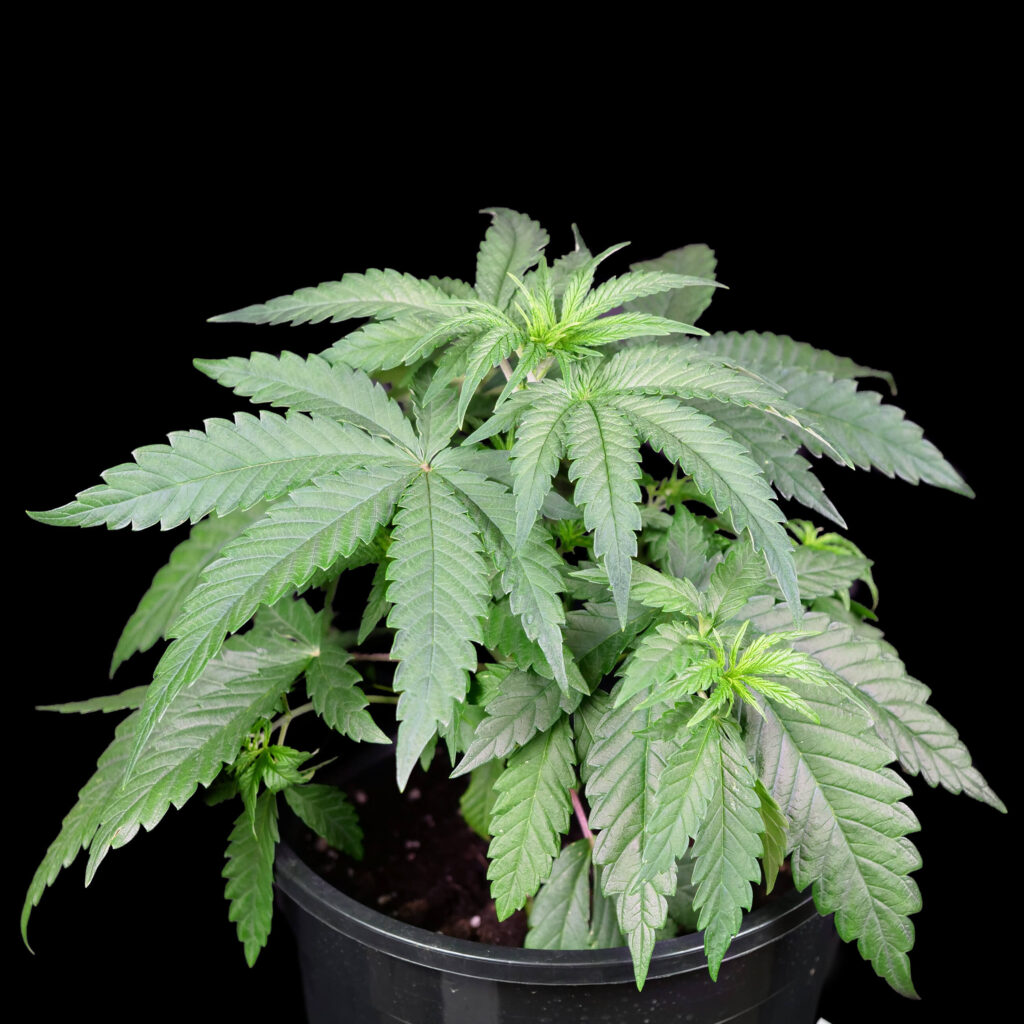
In week four, we switched our plant over to flowering by flipping the lights to a 12/12 schedule. Additionally, we began daily feedings with 800 ml of water (pH 6.0; EC 1.8) mixed with Bio Flower liquid nutrients. Additionally, we reduced the humidity to 60% By the end of the week, our plant was standing 32 cm tall with several sets of massive fan leaves at relatively long internodal spaces.
Week five saw the single largest growth spurt as our plant stretched 19 cm to a new height of 51 cm. The lateral branches exploded upwards and the entire plant had developed a fairly uniform canopy. With the plant set to start showing signs of flowering any day now, we upped the volume of water to 1000 ml per day.

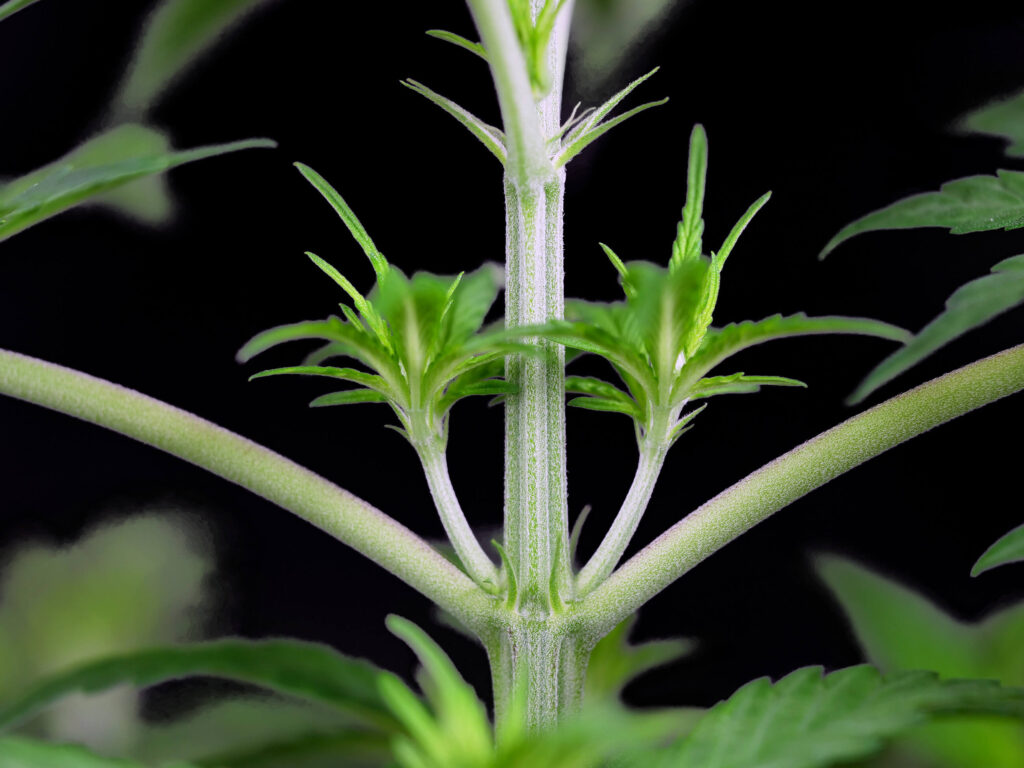
In week six, our plant slowed down a bit growing to 58 cm as the main stalk rose above the lower canopy. The plant’s long, slender form was causing it to slant slightly, so we added a support rod to make sure everything stayed upright. We began to see the first signs of flowering as small white pistils appeared at the tops of branches and the plant’s inner nodes. Finally, we increased daily feedings to 1500 ml which would remain unchanged for the rest of the grow.

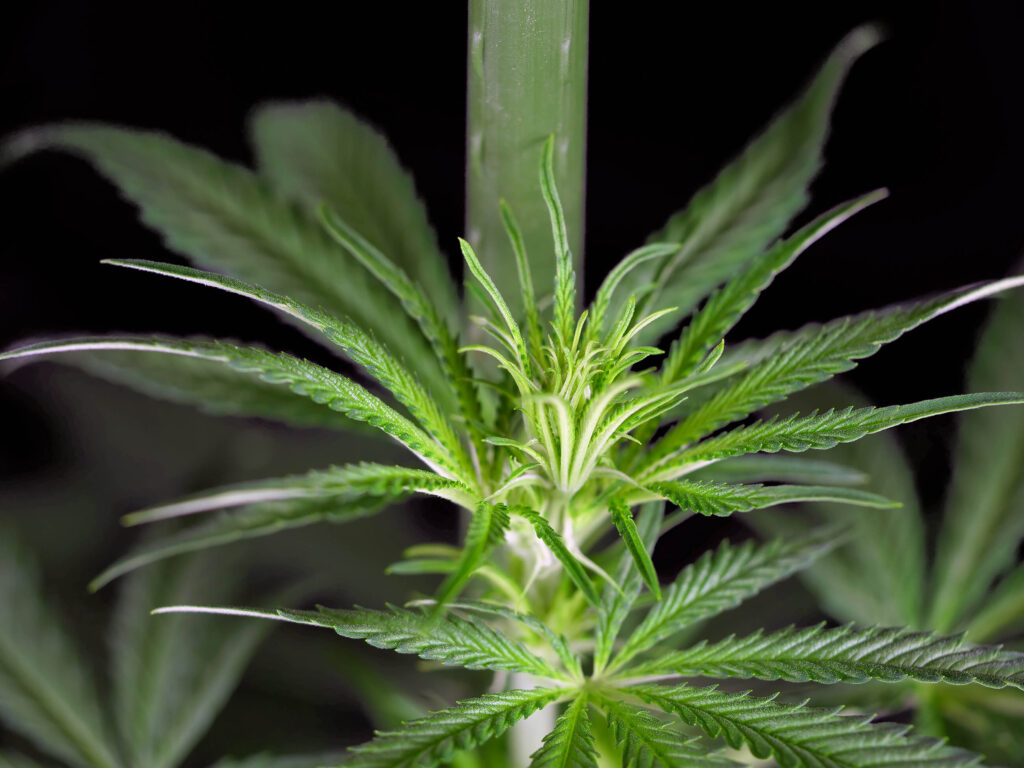
Week seven was another week of rapid stretch as our plant grew to 78 cm tall. By now, every flowering site was sporting a small cluster of pistils and the plant was officially in full bloom. The internodal spacing was fairly extreme for such a heavy indica and we were curious how well the slender branches would hold up as the plant matured.
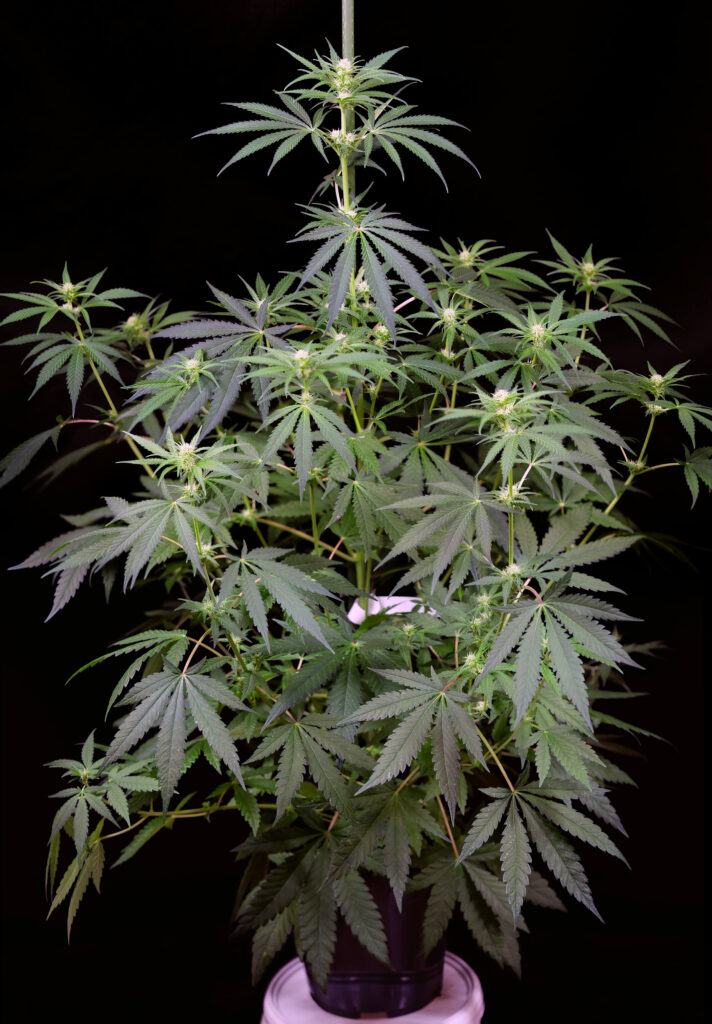
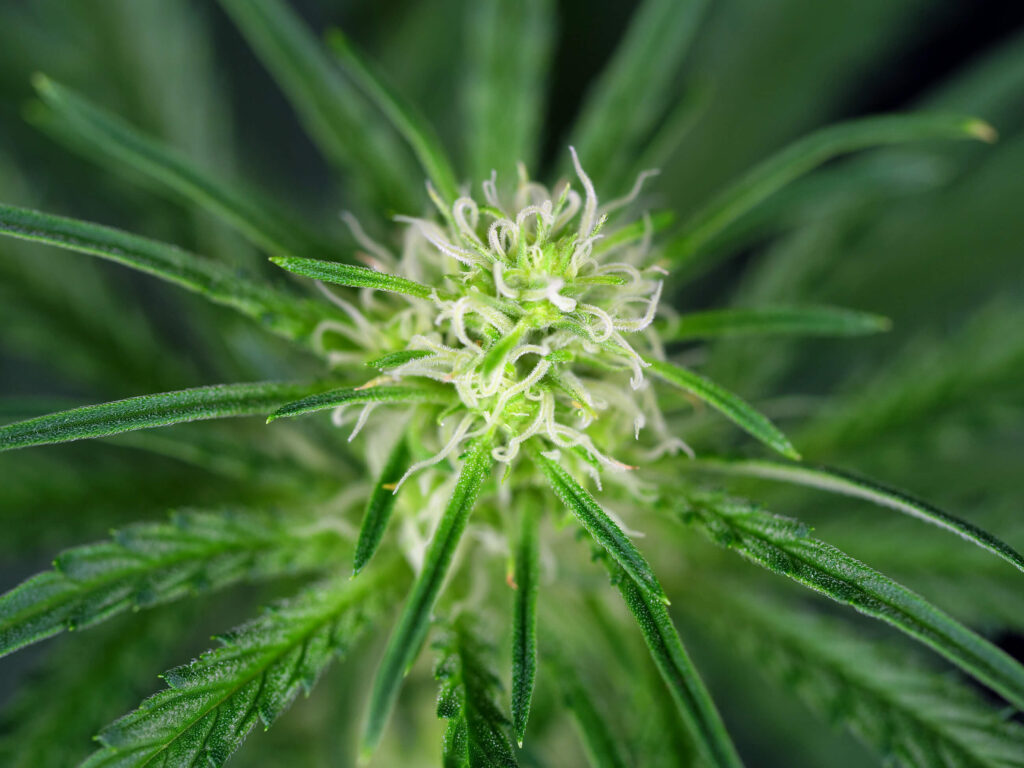
In week eight, our plant continued to slowly shoot upwards and grew to 78 cm tall. The buds continued to develop nicely and the main cola was slowly taking shape. The buds weren’t massive, but they were incredibly dense even at this early stage.
Week nine saw our plant gradually slow down as it gained 6 cm to reach a height of 84 cm. Almost all of this height gain was seen by the main stalk as the lateral branches had stopped growing. Thought they did still retain a very even canopy.
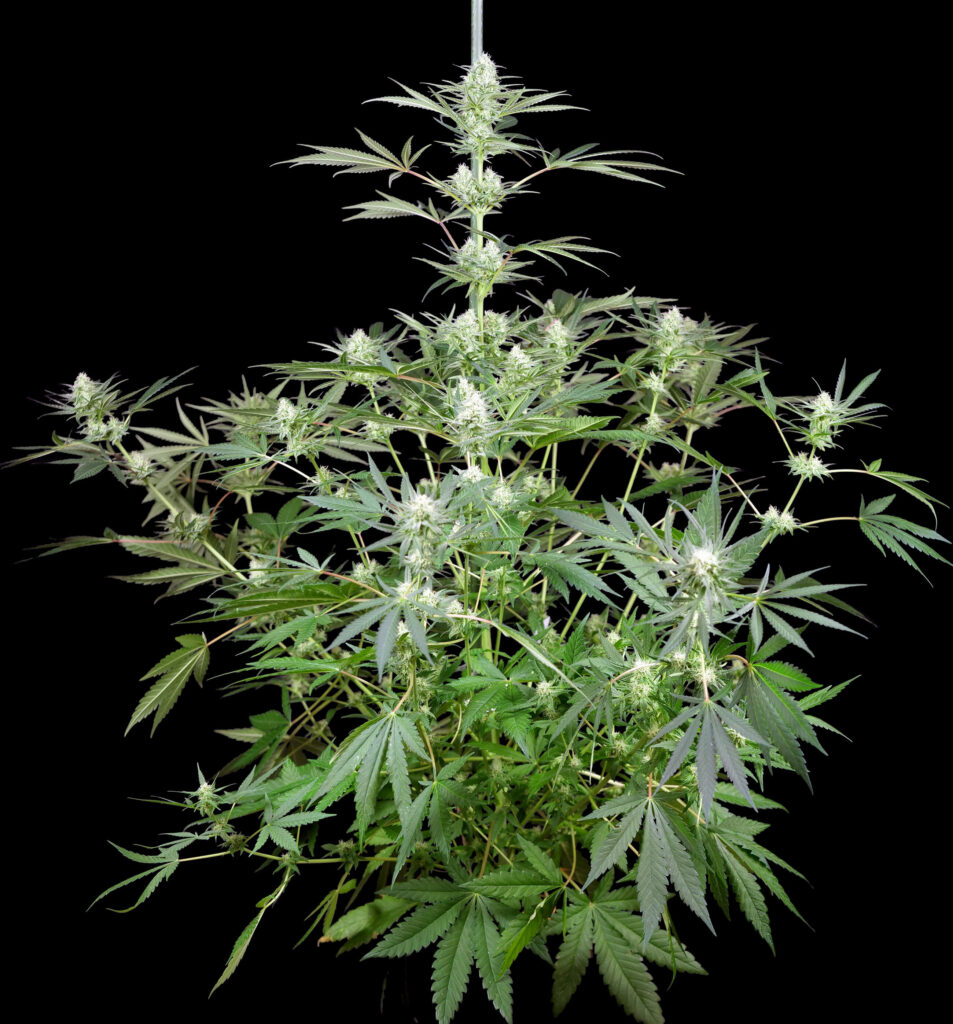
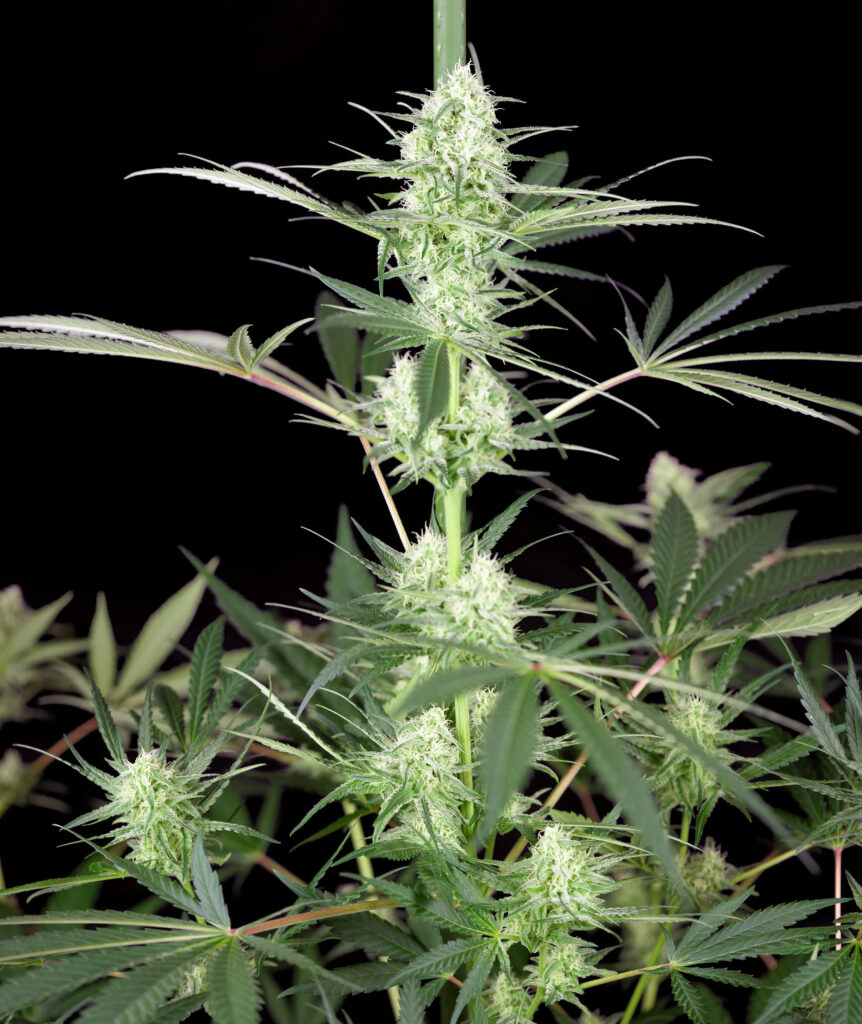
In week ten, our plant grew to 88 cm tall and flowering kicked into overdrive. The dense, heavy buds proved to be too much for the slender lateral branches and we decided to add several support rods to prevent them from snapping under their weight.
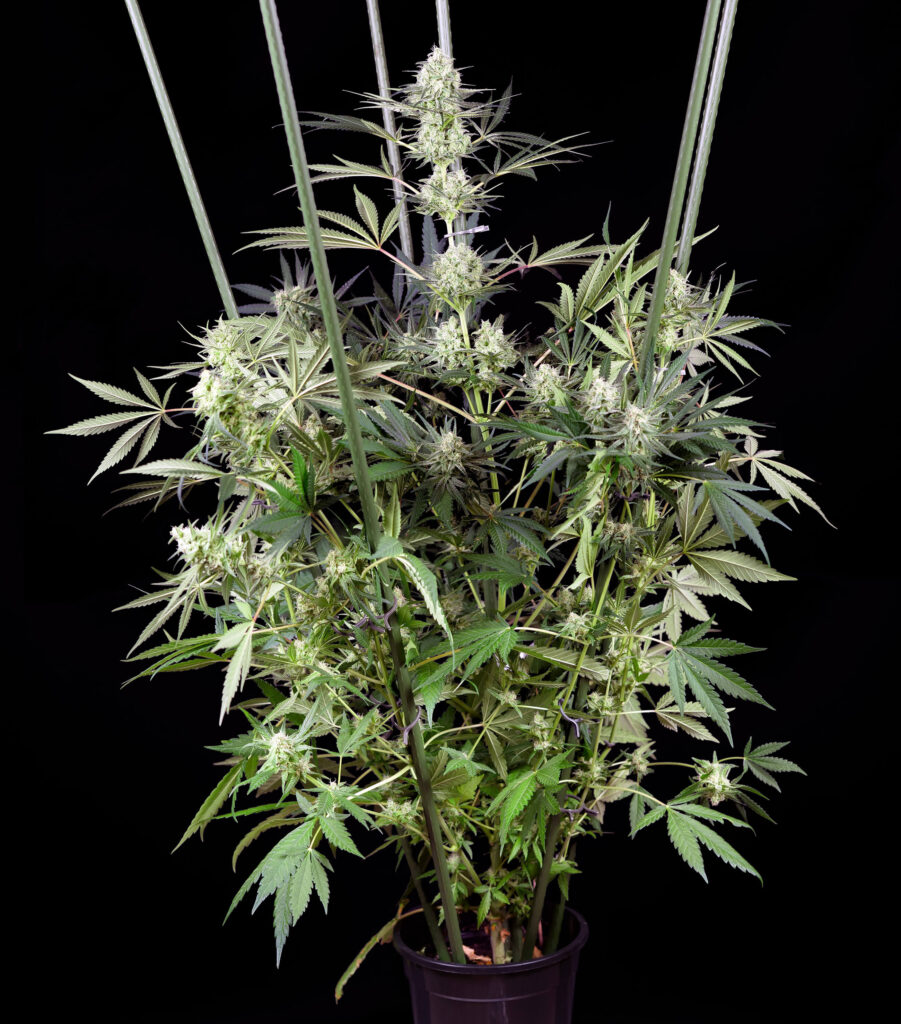
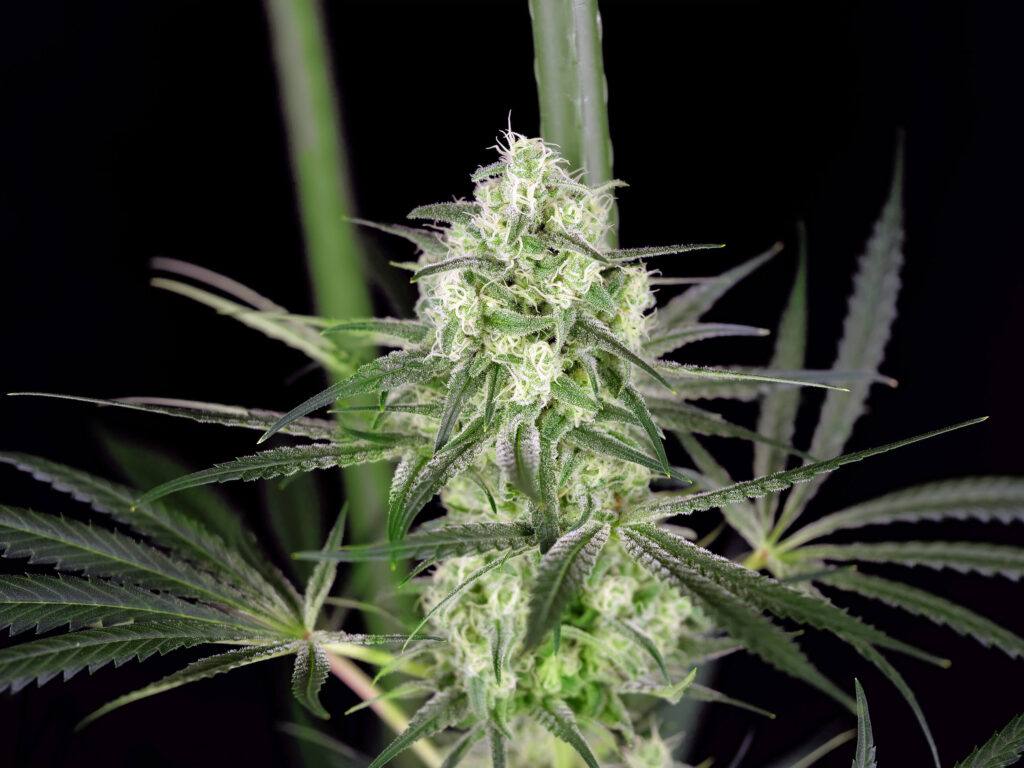
Week eleven was even slower on the vertical growth, but the plant still wasn’t done as it grew to 91 cm. By now, our plant was covered in dozens of golfball-sized buds with pistils that were just starting to turn from white to bright orange. This meant that harvest was only a few short weeks away.
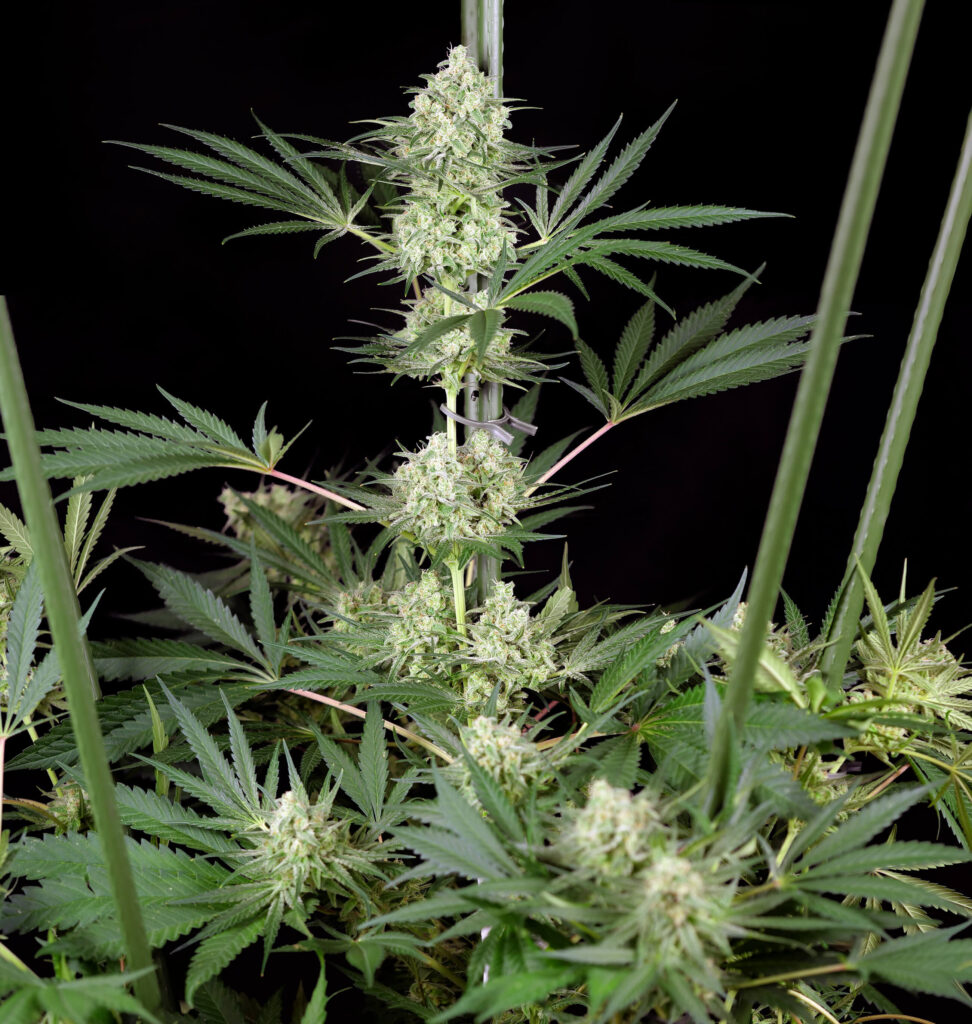
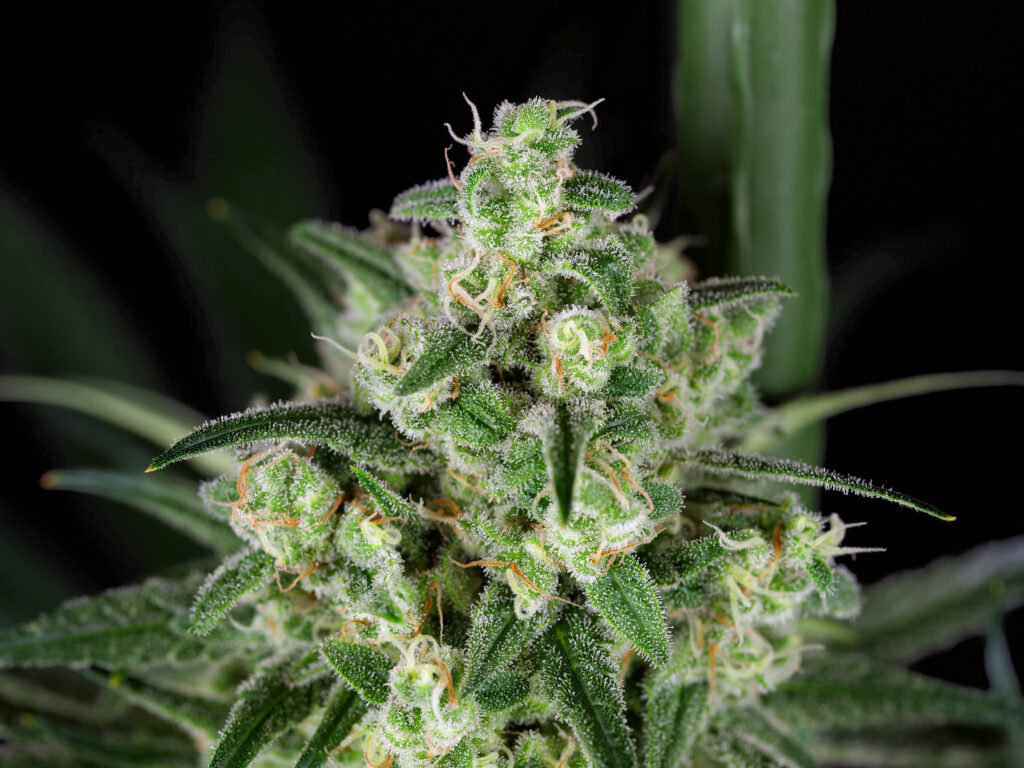
In week twelve, our plant reached its maximum height of 93 cm. This is certainly a bit shorter than this strain has been known to grow but, to be honest, that was probably for the best. The entire plant was straining under the weight of its buds and we weren’t sure how much more it could take.
In week thirteen, the rest of the pistils continued to turn orange and more and more trichomes were shifting from clear to milky to amber meaning that harvest was finally at hand.
In week fourteen, we harvested our Sensi Purple Kush plant.
Harvest
Now that it was finally time to harvest our Sensi Purple Kush, we cut it down at the base and stripped away all of the fan leaves. Next, we left it to hang upside-down in a climate-controlled room with a consistent temperature of 15.5°C and a relative humidity of 50%. We left it there until the smaller branches snapped when bent. This typically requires 10-20 days depending on the size of the plant.
Once the plant was ready, we removed the buds and trimmed away any remaining leaves. The massive buds weren’t terribly leafy and trimming was a breeze. After trimming, the flowers were placed into glass jars for curing. The jars were left unsealed for the first 24 hours and set in a cool, dark space. After being sealed, the jars were “burped” several times per day for an hour each. This was gradually reduced to once per day until the buds were ready. The curing process takes an average of 4-6 weeks and you really can’t rush it.
Once everything was done, we harvested a whopping 158 grams of dry flower with a respectable THC content of 21.7%.
Terpene profile
As harvest was approaching our Sensi Purple Kush plant began to give off a powerful pungent aroma that was unmistakable. Indoors or outdoors, if you value privacy, you’ll want to keep the smell from this strain in mind.
Once cured, though, that powerful scent comes forward in an earthy blend of sandalwood, musk, and just a hint of sweetness. These same notes come out in the flavour and are joined by a sharp—almost bitter—hint of grapefruit with a dash of berry sweetness from the strain’s sativa lineage.
After sampling Sensi Purple Kush, you’ll immediately feel its powerful indica effects as a deep body-stoned feeling washes over every muscle. If you’ve got nowhere to go and just want to veg out on a rainy afternoon, this is the strain for you.
The outcome
Overall, we thoroughly enjoyed growing our Purple Sensi kush cannabis plant. While its combination of dense, heavy buds and thin, lanky branches required a little extra support, the short stature, medium flowering time, and massive yield make this a great option for indoor and outdoor growers alike.
- Disclaimer:Laws and regulations regarding cannabis cultivation differ from country to country. Sensi Seeds therefore strongly advises you to check your local laws and regulations. Do not act in conflict with the law.







